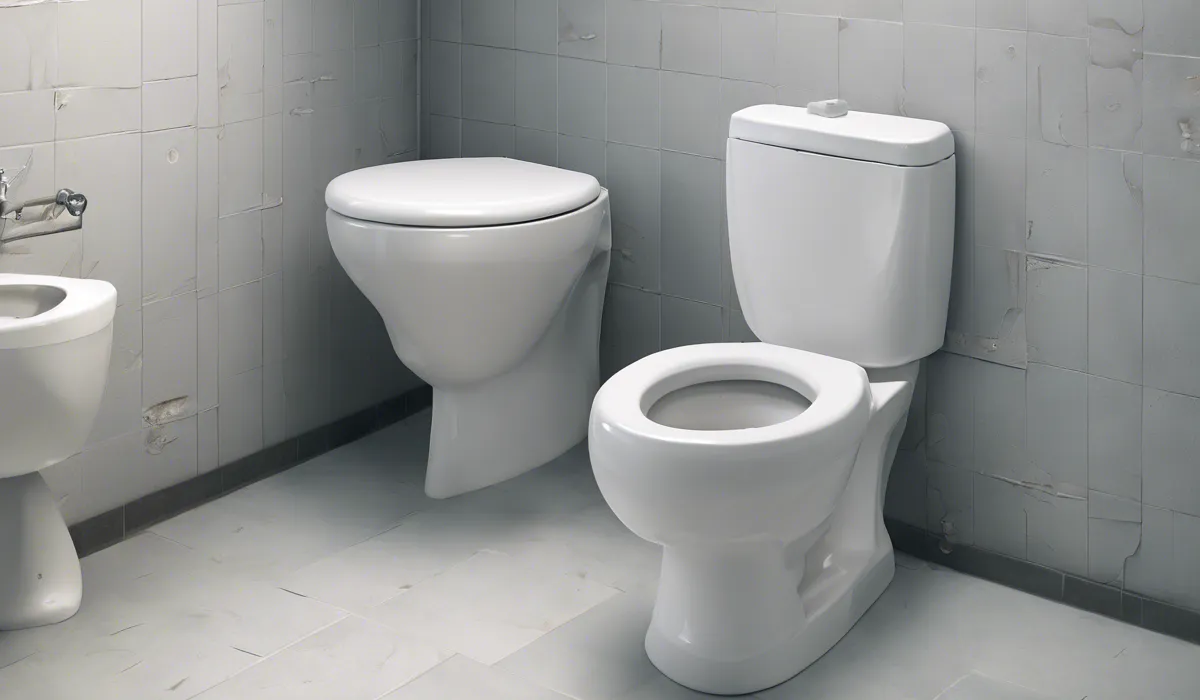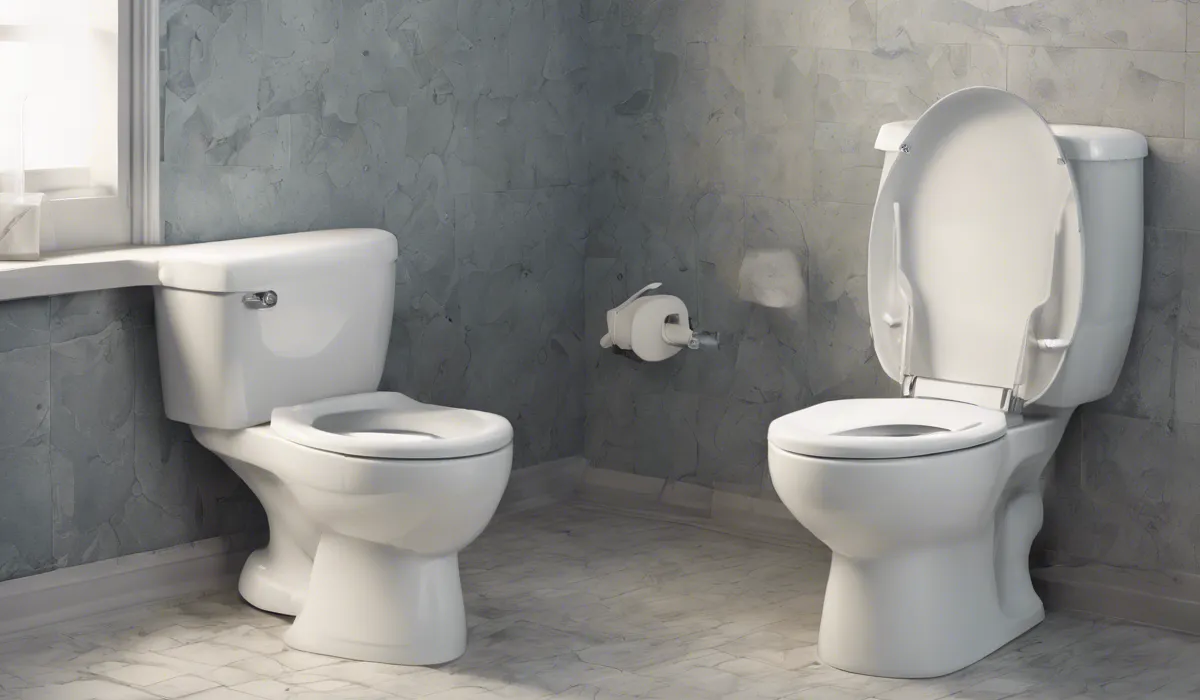To remove mildew in a toilet bowl, pour 1 cup of white vinegar into the bowl, let it sit for 1 hour, then scrub with a toilet brush. Flush to rinse. For stubborn stains, use a paste of baking soda and vinegar, apply to mildew, leave for 15 minutes, scrub, and flush.
Identification of Mildew in the Toilet Bowl

Understanding Mildew
Mildew is a type of fungus that thrives in moist environments. It is a common issue in bathrooms due to the high humidity and dampness.
Unlike mold, which can infiltrate surfaces, mildew remains on the surface, making it easier to clean.
Signs of Mildew Presence
Spotting mildew in your toilet bowl can be easy if you know what to look for. It often appears as a patchy black or grey film on the waterline or under the rim.
A musty odor is another telltale sign of mildew growth.
Comparing Stains and Growths
Mildew can be confused with mineral deposits or mold. Mineral stains are typically caused by hard water and appear as rust or limescale.
On the other hand, mold can appear fuzzy and penetrate below the surface, which requires a different approach to removal.
Natural Remedies for Mildew Removal

Vinegar and Baking Soda Method
To tackle mildew with natural ingredients, start by pouring 1 cup of white vinegar into the toilet bowl. Let it sit for an hour before scrubbing with a toilet brush.
For stubborn stains, create a paste of baking soda and vinegar, apply it to the affected areas, leave it for 15 minutes, then scrub and flush.
Using Borax and Water
Borax, a natural mineral, can be mixed with water to form a powerful cleaning solution. Apply the mixture to the mildew, let it sit for a while, and then scrub. Remember to wear gloves as Borax can be harsh on the skin.
Hydrogen Peroxide Application
Hydrogen peroxide is an excellent disinfectant that can kill mildew. Apply it directly to the stains, allow it to fizz for a few minutes, then scrub away the mildew.
Lemon Juice and Tea Tree Oil
Lemon juice acts as a natural bleaching agent and can help remove mildew stains. Tea tree oil, recognized for its fungicidal properties, can be diluted with water and sprayed on the mildew. Leave it on for some time and then scrub off.
Chemical Solutions and Preventative Measures

Commercial Mildew Removers
There are many commercial mildew removers designed for use in toilets. They are effective but should be used according to the manufacturer’s instructions.
Always make sure the bathroom is well ventilated when using these products.
Bleach for Stubborn Mildew
For persistent mildew, bleach can be a potent solution. Mix a small amount of bleach with water and apply it directly to the mildew.
Allow it to sit for a few minutes, then scrub and flush. It is essential to wear gloves and ensure good ventilation when using bleach.
Safety Precautions with Chemicals
When handling chemicals, safety is paramount. Wear gloves, goggles, and ensure ventilation. Never mix chemicals, as this can create dangerous fumes.
Maintaining a Cleaning Routine
A regular cleaning routine is vital for preventing mildew growth. Clean your toilet bowl at least once a week, and consider using a mildew inhibitor for long-term prevention.
Controlling Moisture and Ventilation
Good ventilation and moisture control are essential in a bathroom. Use an exhaust fan or open a window to reduce humidity.
Regularly inspect your toilet flange and other fixtures for leaks that can contribute to mildew growth.
FAQs About Removing Mildew in Toilet Bowl
How can I use white vinegar to remove mildew from my toilet bowl?
Pour 1 cup of white vinegar into the toilet bowl, let it sit for 1 hour, then scrub with a toilet brush and flush to rinse.
What is the process for tackling stubborn mildew stains in the toilet?
For stubborn stains, make a paste of baking soda and vinegar, apply it to the mildew, leave for 15 minutes, then scrub with a brush and flush the toilet.
Is it safe to use vinegar and baking soda together in a toilet bowl?
Yes, using a combination of vinegar and baking soda is a safe and effective method for removing mildew in a toilet bowl.
Can I leave the vinegar in the toilet bowl longer than 1 hour?
Yes, you can leave the vinegar for longer than 1 hour, especially for more severe cases of mildew, but ensure you flush it out thoroughly afterwards.
How often should I clean my toilet to prevent mildew growth?
Regular cleaning, at least once a week, can help prevent the growth of mildew in your toilet bowl.
Final Thoughts
To eradicate mildew in a toilet bowl, white vinegar is an effective initial treatment. Simply pour 1 cup into the bowl, wait for an hour, then scrub and flush.
For more persistent stains, a paste made from baking soda and vinegar should be applied to the affected areas, left to act for 15 minutes, and then scrubbed off before flushing.
